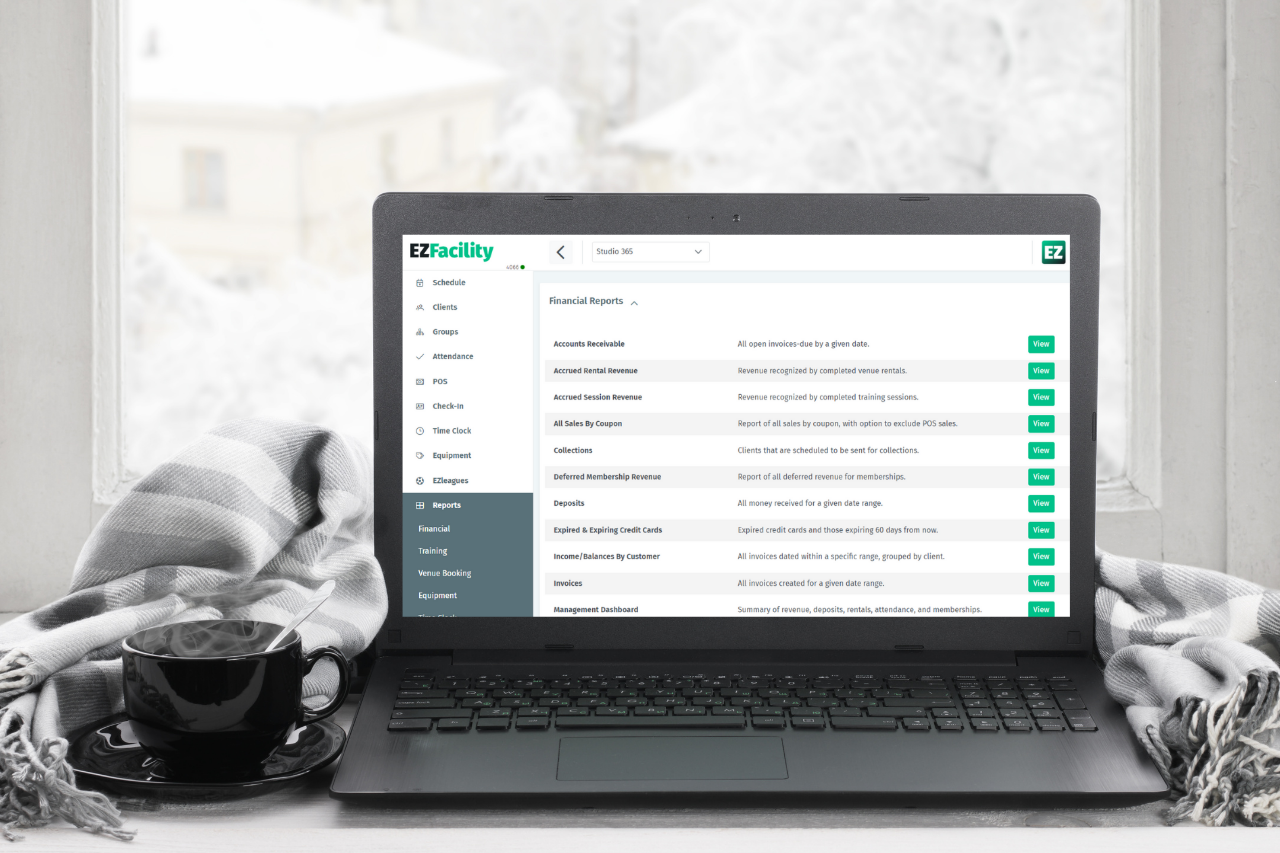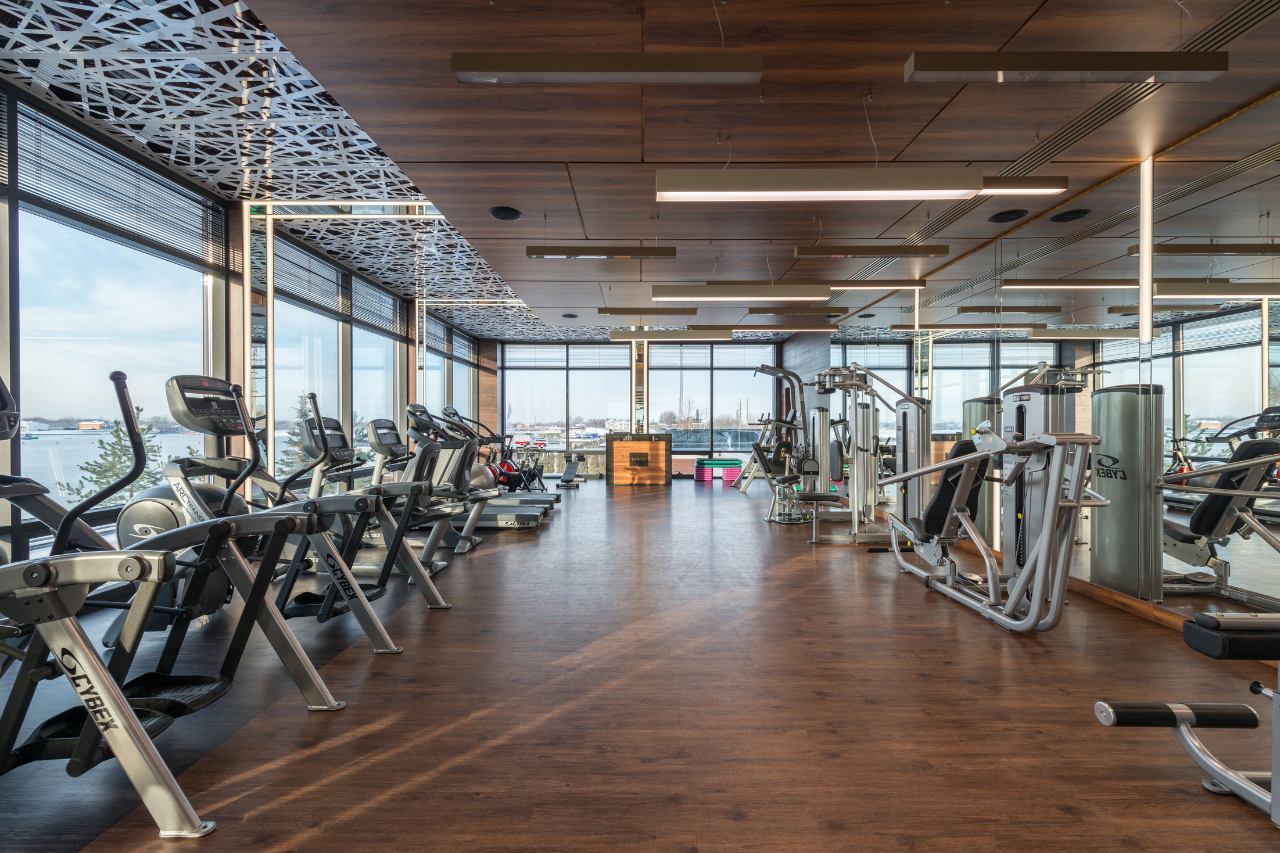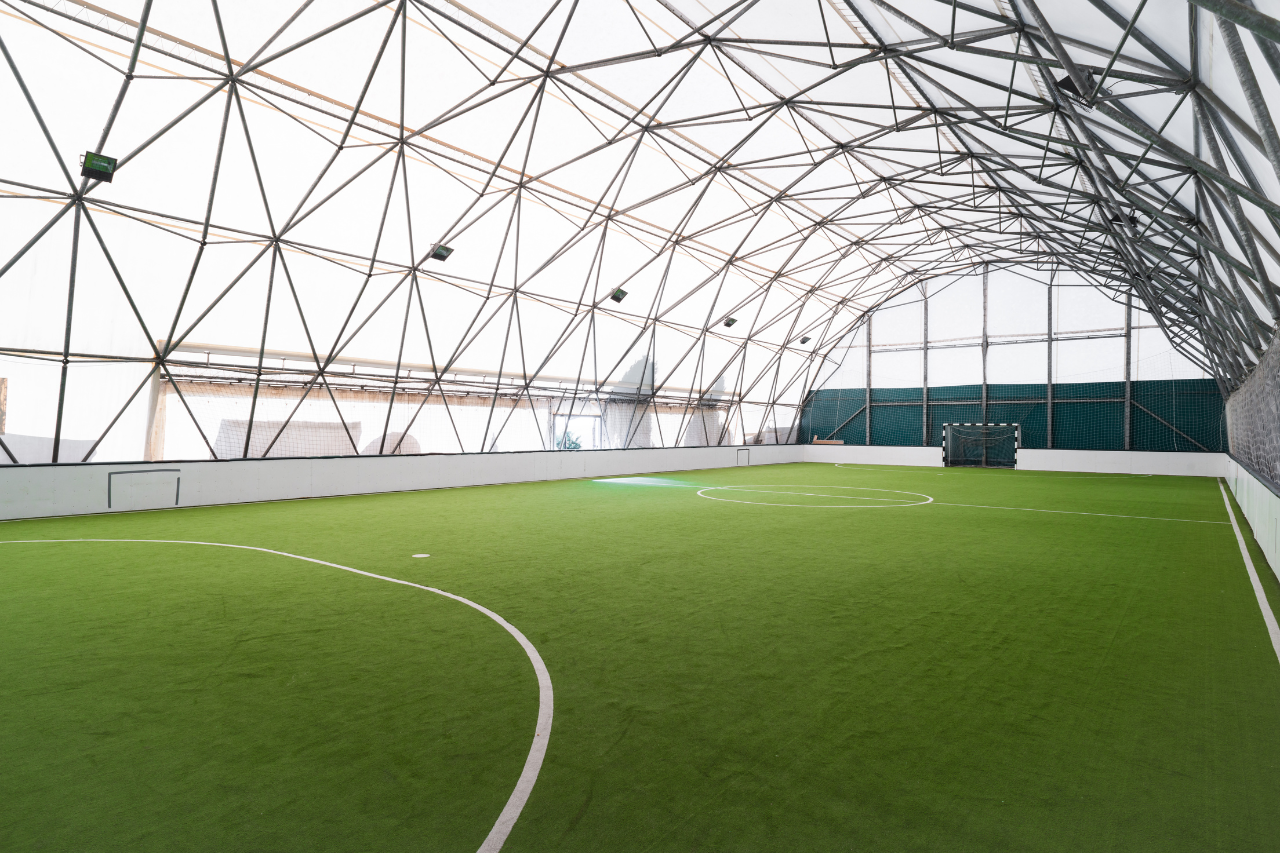Ever wondered what ignites business growth? It’s good, strategic marketing – and this is particularly true for ice rinks. Without effective marketing ideas, your ice rink might turn into a deserted place rather than a bustling winter paradise.
Perhaps you are an ice rink owner, a fitness facility manager, or someone running a frosty arena. No matter your role, it’s crucial to embrace creativity in your marketing efforts.
Why is that so important? Because exceptional marketing is your ticket to attracting hordes of skaters, boosting your revenue, and establishing a beloved presence within your local community.
So, if you’re ready to take your ice rink from average to amazing, keep reading for 10 marketing ideas that will help you skate to success!
10 Marketing Ideas for Ice Rinks
Marketing an ice rink can be both exciting and challenging. The key to success lies in employing innovative strategies that resonate with your target audience and entice them to lace up their skates.
Whether you’re aiming to attract families, avid skaters, or event organizers, a well-rounded marketing approach is essential.
Below, we’ve compiled 10 creative and effective marketing ideas that will help you elevate your ice rink’s profile, drive foot traffic, and ensure your venue becomes a beloved community hotspot.
1. Creating an Irresistible Online Presence
In today’s digital age, having a compelling online presence is crucial for any business, including ice rinks. An engaging and user-friendly website, active social media profiles, and positive online reviews can draw new customers to your rink and keep them coming back.
A well-crafted online presence not only showcases your services, events, and special offers but also allows you to connect with your community in meaningful ways.
Let’s explore how you can create an irresistible online presence that will set your ice rink apart from the competition.
Website Optimization
Your website is often the first point of contact potential visitors have with your rink. Ensure it’s user-friendly, mobile-optimized, and provides essential information like location, hours, pricing, and services.
Utilize high-quality images and videos to showcase your rink’s facilities and atmosphere. Consider using a booking tool on your website to make it easier for customers to reserve skating sessions.
Online Registration
Integrate online registration systems such as EZFacility to simplify the process for customers. This not only enhances the user experience but also streamlines your administrative tasks.
EZFacility also offers a customizable online booking system, allowing customers to easily reserve ice time or purchase tickets for events. This can increase ticket sales and improve customer satisfaction.
By leveraging these digital tools and strategies, you can create a captivating online presence that effectively attracts and retains loyal customers at your ice rink.
2. Utilizing Social Media Platforms Effectively
Social media is a highly effective way to engage with your community and promote your rink. With the right strategies, you can reach a larger audience, engage with existing customers, and attract new ones.
Create a strong social media strategy by regularly posting high-quality content, sharing updates on events and promotions, and actively responding to comments and reviews. Platforms like Facebook, Instagram, TikTok, and Twitter can be excellent avenues for sharing updates, promotions, and engaging content such as videos of cool tricks or behind-the-scenes glimpses of life at the rink.
Here are some additional tips to utilize social media effectively:
Visual Content & Engagement
Ice skating is a visually appealing activity, so make use of eye-catching visuals on your social media profiles to entice potential customers. Share pictures and videos of your rink, events, and happy customers. Interact with your followers by responding to comments, hosting contests or polls, and sharing user-generated content. This helps build a sense of community and strengthens brand loyalty.
Promotional Offers & Collaborations
Social media is an excellent platform for promoting special offers, discounts, or packages. Use attractive visuals and compelling captions to entice customers to visit your rink. Partner with local businesses or influencers on social media to reach a wider audience and tap into their existing customer base. This can also be a cost-effective way to market your rink.
By leveraging these social media strategies, you can enhance your rink’s visibility, engage with your community, and ultimately drive more visitors to your facility.
3. Hosting Spectacular Events
Hosting spectacular events at your ice rink can significantly boost your venue’s popularity and attract a diverse range of visitors. Not only do these events entertain the community, but they also foster a sense of camaraderie among participants. Additionally, hosting events can also generate revenue through ticket sales, sponsorships, and merchandise sales.
By carefully planning and promoting these activities, you can ensure that your rink becomes a go-to destination for exciting, unforgettable events, thereby increasing foot traffic and strengthening your rink’s presence in the local area.
To give you a better idea of what types of events can elevate your ice rink’s appeal, here are a few examples worth considering:
Themed Skating Nights
Organize themed skating nights such as “Disco Night,” “80s Night,” or “Superhero Night.” These events add an element of fun and attract diverse groups of people looking for a unique experience.
Events and Hockey Tournaments
Hosting local hockey tournaments or figure skating competitions can draw in crowds and participants from various regions. These events can boost your rink’s visibility and reputation.
Community Events
Host community events at your ice rink, such as charity fundraisers, themed skate nights, or holiday celebrations. Collaborate with local businesses and organizations to promote these events and potentially sponsor them. These events not only bring in additional revenue but also create a sense of community and support for your rink.
Virtual Events
In today’s digital age, virtual events have become increasingly popular. They provide an opportunity for ice rinks to connect with their audience, even when they can’t physically visit the facility.
Here are some ideas for hosting virtual events:
- Live Streams: Host a live stream of your rink’s activities, such as a figure skating performance or a hockey game. This allows remote audiences to experience the excitement of being at the rink from the comfort of their own homes.
- Online Classes: Offer virtual classes, such as beginner skating lessons or hockey drills. This can be a great way to reach a wider audience and attract new customers who may not have access to an ice rink nearby.
- Virtual Tours: Give your followers a behind-the-scenes look at your facility through a virtual tour. This can include showing off the Zamboni or taking a walk through the locker rooms.
Offering a variety of events, both in-person and virtual, can significantly enhance the visibility, engagement, and appeal of your ice rink. It’s important to regularly update and promote these events to keep your audience interested and coming back for more.
4. Strategic Partnerships
Building strategic partnerships can significantly enhance the reach and credibility of your ice rink. By collaborating with local businesses, schools, and community organizations, you can create a robust network that mutually benefits all parties involved.
These partnerships not only bring in additional resources and promotional opportunities but also foster a sense of community, encouraging more people to visit and support your rink.
Below, we explore effective ways to leverage these partnerships for maximum impact.
Collaborating with Local Schools & Organizations
Partner with local schools and organizations to offer skating lessons, field trips, or fundraising events. These collaborations can introduce skating to new audiences and generate consistent traffic to your rink.
Sponsorship Opportunities
Reach out to local businesses and offer sponsorship opportunities for events at your ice rink. This can include advertising space in the rink, naming rights for specific areas, or sponsoring a team or league. In return, you can promote their business on your social media, website, and during events.
Cross-Promotion
Partner with other businesses or organizations in your community to cross-promote each other’s offerings. For example, a local coffee shop can offer discounts to customers who show their ice rink admission ticket and in return, you can promote the coffee shop at your rink. This not only exposes both businesses to new audiences but also encourages community members to support and patronize local establishments.
Charitable Partnerships
Consider partnering with a local charity or non-profit organization and donating a portion of your proceeds to their cause. This not only allows you to give back to the community but also attracts customers who are passionate about supporting charitable causes. You can also collaborate on events and promotions, further increasing exposure for both parties.
By embracing these strategies, your ice rink can become a thriving community hub, fostering connections and creating memorable experiences for all who visit.
5. Creative Promotions and Packages
Creating compelling promotions and packages is key to drawing in a wide array of skating enthusiasts and ensuring a steady influx of visitors to your rink. Offering unique deals and imaginative packages can significantly enhance the attractiveness of your rink, catering to diverse customer needs and preferences.
Below are some creative ways to consider promoting your ice rink:
Seasonal Offers to Boost Traffic Outside of Peak Months
Create special promotions and packages for off-peak times. For example, offer discounted family passes during the summer months or bundle deals that include skate rentals and refreshments. By promoting these deals during slower periods, you can attract customers who may not have otherwise considered visiting your rink.
Group Rates and Special Packages
Partner with local schools, community organizations, and businesses to offer group rates for organized visits. You can also create packages that include private rink rentals for events such as birthday parties or corporate team building outings. These deals not only bring in a stream of customers but also provide opportunities for repeat visits and word-of-mouth recommendations.
Collaborate with Local Businesses
Partner with nearby businesses such as restaurants, movie theaters, or arcades to create joint promotions. Consider offering discounts or specials at these establishments for customers who visit your rink, and vice versa. This cross-promotion can expose your rink to a wider audience and attract new customers who may not have been aware of your rink before.
By employing these strategic promotional tactics, you can effectively enhance your rink’s visibility, attract a broader audience, and foster lasting customer loyalty.
6. Harnessing the Power of User-Generated Content
User-generated content (UGC) is a powerful tool for increasing engagement and building a community around your skating rink. Here are some tips and examples to help you leverage UGC effectively:
Create a Branded Hashtag
Encourage your customers to use a specific hashtag when posting about their experiences at your rink. For example, #SkateFunTown or #RinkAdventures. This makes it easy to find and share customer posts.
Host Social Media Contests
Organize photo or video contests where customers can submit their best skating moments. Offer attractive prizes such as free passes or merchandise to motivate participation.
Feature Customer Stories
Share stories, photos, or videos of your customers on your own social media pages or website. Highlighting your customers’ experiences can enhance community feeling and act as natural endorsements.
Incentivize Reviews and Testimonials
Encourage your customers to leave positive reviews on platforms such as Google, Yelp, or Facebook by offering discounts or small gifts.
Collaborate with Influencers and Bloggers
Partner with local influencers who can share their experience at your rink with their followers. This can introduce your rink to their audience and increase your visibility.
By fostering an environment where customers feel encouraged to share their experiences, you can create a dynamic online presence that attracts new visitors and keeps your community engaged.
7. Engaging Email Marketing Campaigns
Email marketing remains one of the most effective ways to communicate directly with your audience. By crafting compelling, targeted emails, you can keep your customers informed about upcoming events, special promotions, and exclusive offers at your rink.
Additionally, an engaging email campaign helps to build a loyal customer base by maintaining regular contact and providing value.
This section will explore various strategies for creating email marketing campaigns that not only capture attention but also encourage action.
Newsletter
Develop a regular newsletter to keep your audience informed about upcoming events, promotions, and rink news. Email marketing can help maintain engagement with your audience and encourage repeat visits.
Personalized Emails
Use customer data such as email preferences and past purchases to send personalized emails. This shows that you value your customers and can help drive sales through targeted promotions.
Promotional Emails
Send promotional emails with discounts or special offers to attract customers who may be hesitant to spend money at your rink. Use eye-catching subject lines and clear calls to action to entice recipients to open and act on your emails.
Interactive Emails
Incorporate interactive elements such as polls, quizzes, or games in your emails to increase engagement and make them more memorable. This can also help gather valuable insights and feedback from your audience.
By implementing these email marketing strategies, you can effectively communicate with your audience, drive engagement, and boost attendance at your skating rink.
8. Ice Rink Merchandise and Branding
Building a strong brand identity and offering a variety of merchandise can significantly enhance the overall experience at your ice rink. Not only do these strategies provide additional revenue streams, but they also help to cultivate a sense of community and loyalty among your visitors.
In this section, we will explore how to create a compelling brand and effectively market your ice rink merchandise to boost your business.
Pro Shops
If your rink has a pro shop, ensure its well-stocked with quality equipment and apparel. Offering exclusive branded merchandise can enhance your rink’s visibility and provide an additional revenue stream. Consider partnering with popular skating brands or creating your own line of custom merchandise to sell in your shop. This can include items such as t-shirts, hats, water bottles, and other accessories.
Custom Apparel
In addition to selling branded merchandise at your pro shop, consider offering custom apparel that your visitors can wear while skating. This could include personalized jerseys or hoodies with your rink’s logo and branding. Not only does this create a sense of community among your visitors, but it also serves as free advertising for your ice rink.
Online Merchandise Store
With the rise of e-commerce, having an online merchandise store can be a great way to reach a wider audience and boost sales. Make sure to regularly update your online store with new merchandise and promotions to keep customers engaged.
Seasonal Merchandise
Consider offering seasonal merchandise that ties in with holidays or special events. This could include holiday-themed apparel, limited edition items for a specific event at your rink, or even collaborating with local businesses to create unique merchandise.
By diversifying your merchandise offerings and utilizing various marketing strategies, you can create a strong brand presence and foster a loyal community of customers who proudly support your ice rink.
9. Implementing Customer Feedback Systems
Gathering and acting on customer feedback is crucial for continuous improvement, and implementing effective customer feedback systems is key to understanding and enhancing the customer experience.
Here are a few suggestions to consider:
Online Surveys
Create and distribute online surveys using tools like SurveyMonkey or Google Forms. These surveys can be sent to customers via email or integrated into your website. Keep the surveys short and focused on specific areas of your operation.
In-Store Feedback Kiosks
Install digital kiosks in your rink where customers can quickly provide feedback. These kiosks can be equipped with touch screens and simple interfaces, allowing for immediate, hassle-free input.
Social Media Channels
Utilize your social media pages to gather feedback. Encourage customers to leave reviews, comments, and suggestions on platforms such as Facebook, Instagram, and Twitter. Engage with customers by responding to their feedback personally.
Suggestion Boxes
Place physical suggestion boxes at strategic locations around your rink. Ensure that customers can easily find and use them, and regularly review the suggestions and implement changes where feasible.
Feedback Apps
Invest in a feedback app tailored for businesses in the entertainment and recreation sector. These apps often provide comprehensive features, including real-time feedback collection, analytics, and reporting tools.
Follow-Up Emails
Send follow-up emails post-visit, asking customers for their thoughts and experiences during their visit. This personal touch can also include a small incentive, like a discount code, to encourage responses.
By adopting a variety of customer feedback systems, you can gather comprehensive insights, improve service quality, and foster stronger relationships with your clientele.
10. Monitoring and Adapting Marketing Strategies
In addition to gathering feedback, it’s important to continuously monitor and adapt your marketing strategies. This involves regularly reviewing the performance of your campaigns and making necessary adjustments to achieve the best results.
Some ways to keep track of your marketing efforts include:
Analytics Tools
Utilize tools like Google Analytics or Facebook Insights to track website traffic, social media engagement, and other key metrics.
A/B Testing
Test different versions of your marketing materials, such as ads or email subject lines, to see which perform better.
Customer Surveys
In addition to gathering feedback on the overall experience, consider adding questions about how customers found out about your rink and what motivated them to visit.
Competitor Analysis
Keep an eye on what your competitors are doing and see if there are any strategies you can adapt or improve upon.
By regularly monitoring and adapting your marketing strategies, you can ensure that your efforts are effective and in line with the ever-changing needs of your customers. This will help you stay competitive in the market and continue to attract new patrons to your ice rink.
Conclusion
By incorporating a mix of traditional and digital methods, regularly evaluating and adjusting your tactics, and keeping an eye on your competitors, you can ensure that your rink remains a popular destination for customers.
With the right approach, you can continue to attract new visitors and retain loyal customers year after year. So don’t be afraid to try new things and constantly improve upon what works best for your business.
Now, it’s time to put these ideas into action and watch your rink skate to success!
Try EZfacility for free and discover how our comprehensive management software can elevate your ice rink’s marketing campaigns through advanced tech integration, efficiency, and revenue diversification strategies.
























